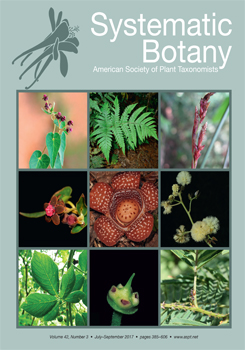In this paper we assess the impact of polyploidy and hybridization in the Bouteloua curtipendula species complex (BCC). The BCC is a monophyletic group of perennial grasses in the Chloridoideae subfamily. We tested for evolutionary signatures of hybridization and polyploidy in the BCC by obtaining 77 chromosome counts from anther mother cells (2n = 20 to >100) and comparing the phylogenetic pattern of diploids and polyploids in nuclear and chloroplast trees. We sequenced ITS and trnT-L-F regions for 96 and 70 individuals, respectively, resulting in 150 nuclear ribosomal ITS sequences, including 54 cloned sequences. We found no evidence for recombination between ITS sequences with a PHI test. Maximum parsimony and Bayesian analyses were used to estimate the ITS phylogeny. Diploid samples were found in all clades, while most of the polyploid samples were concentrated in a single clade. Cloned diploids contained one to three copies of ITS with >99% sequence similarity. The tetraploids B. purpurea and some B. curtipendula samples had a low amount of variation among ITS copies, while the cloned polyploids possessed several highly divergent ITS copies. Pollen size correlates with ploidy-level in the BCC, but is not a clear indicator of genome size. We found evidence that the BCC lineage has a complicated evolutionary history that has included autopolyploidy and allopolyploidy.
How to translate text using browser tools
25 August 2017
Polyploidy as a Factor in the Evolution of the Bouteloua curtipendula Complex (Poaceae: Chloridoideae)
Maria Elena Siqueiros-Delgado,
Amanda E. Fisher,
J. Travis Columbus
ACCESS THE FULL ARTICLE

Systematic Botany
Vol. 42 • No. 3
Jul-Sep 2017
Vol. 42 • No. 3
Jul-Sep 2017
allopolyploidy
autopolyploidy
grasses
hybridization




